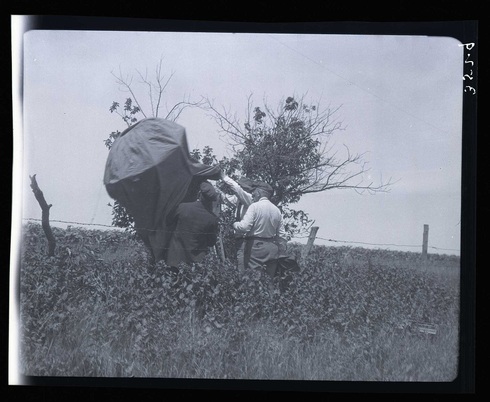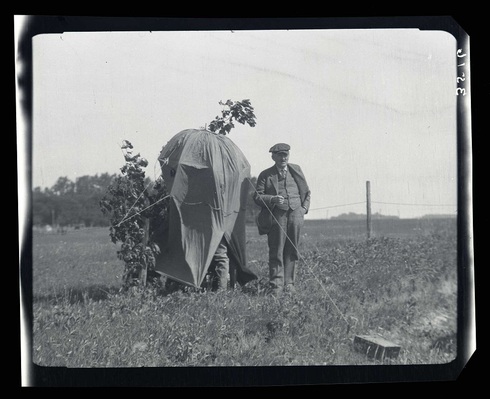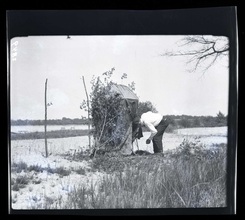Followers of the Exploring blog will recognize that since we began the project we’ve been exposed to a lot of birds due to the content of the collections that we are scanning. When you digitize and process the personal and professional photographic materials of an ornithologist, birds become deeply ingrained into your life. As such, you could say that since we began our project last May, birds have been on the brains of the staff at the University Archives, as we even find ourselves paying attention to avian affairs found outside of the Archives.
A few weeks ago a coworker recommended an article that she came across in the Star Tribune about, what else, bird photography! Jim Williams, who keeps a blog for the Tribune called Wingnut, wrote a special article for the Home & Garden section regarding the growth of digital photography and responsible nature watching: “Nonbirding photographers sometimes cross lines to get a photo.” In brief, the article is a reminder to photographers that in the pursuit of the perfect shot, it is important to respect the welfare of birds. Williams referenced the American Birding Association’s code of ethics, and advised, “If your behavior will alter the bird’s behavior, don’t do it.“
So how do you observe and capture (with camera) birds without disturbing them? Use a blind!
A bird blind was an essential piece of equipment to both former curators and directors of the Bell Museum,Thomas Sadler Roberts and Walter J. Breckenridge. Blinds provided the necessary cover in order to observe birds, undisturbed, in their natural environment.

– Taking movies of Shrike’s nest, Montevideo, July 5, 1924

– Taking moving pictures, observation tent at Burrowing Owl’s nest, Madison, July 4, 1924


– Taking pictures of Killdeer at Lake Calhoun, May 1925
For more information on bird blinds and responsible nature watching, see “A Guide to Wildlife Viewing and Photography Blinds,” by the Colorado Division of Wildlife and the Virginia Department of Game and Inland Fisheries.